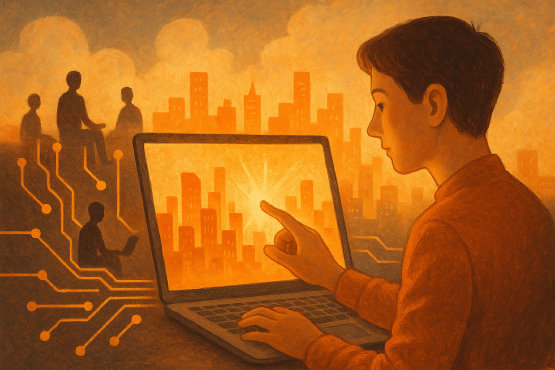How to Design the Future with Human-Centered Technology in the Age of Digital Transformation
Digital Innovation in 2025
We are currently amidst a wave of digital innovation, and technology is fundamentally transforming our way of life. Beyond mere acquisition of technology, there is a need for thinking that can provide insights into essence and strategic design towards people. Understanding these changes is crucial for both individuals and organizations to achieve true growth.
Seeing Structures Beyond Technology - System Analysis
Technology is always advancing, but we must understand that a simple list of technologies does not constitute innovation. The essence of systems analysis is the ability to understand and interpret the connections and structures between complex technologies. For example, if we analyze a supply chain system that combines AI and IoT, we can identify hidden bottlenecks or unnecessary procedures, and through this, propose new solutions.
The Power to Decode History — Critical Thinking
Critical thinking is the wisdom to understand the current direction through reflection on past failures. For example, it highlights the ability to accurately pinpoint issues from the time of TCP/IP design and present new possibilities. The ability to critically view the past serves as a foundation for designing the present without hesitation.
Technology computes, but people feel — The Philosophy of UX/UI
Technology operates precisely, but ultimately, users respond with emotions and experiences. UX/UI design plays a crucial role in translating technology into a human language and designing the user's experience. Good UX anticipates discomforts and considers the journey, fostering positive interactions with users.
Three Integrations - The Birth of a New Thought System
System analysis, critical thinking, and UX/UI are no longer separate domains. When these are integrated, they can exert powerful influence and must be centered on people when designing the future. True strategies are established when technological insights, understanding of people, and lessons from the past are combined.
Strategies for Realizing Thoughts - Real Case Studies
Looking at the strategies that Apple, Google, and promising domestic startups are establishing through integrated thinking, they place people at the center, deeply understand technology, and record failures. Their commonality lies in the fact that sustainable digital strategies begin with a deep concern for people.
Conclusion - Designing a Human-Centered Future Beyond Technology
What we need to design is a system for people, and technology is merely a tool used by humans. When system analysis, critical thinking, and UX/UI design are integrated, we can move towards a humane civilization. Those preparing for the future must remember the failures of yesterday, respect today's users, and strive towards the possibilities of tomorrow.

Post a Comment